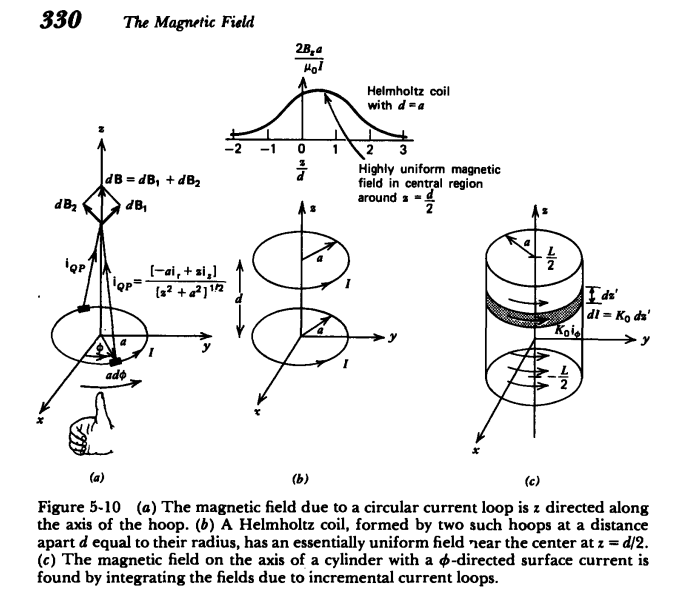In the EMFT notes of MIT Course-ware, the derivation of the magnetic field due to a circular ring at its axis, using Biot-Savart's Law and the cylindrical coordinate system is done as follows,
I am unable to understand how they calculate the $a_r$ vector component. Mainly the line, 'the radial vector changes direction as a function of $\phi$, being oppositely directed at $-\phi$, so that the total magnetic field due to the whole in the radial direction is zero.'
Why does the radial vector change direction isn't it always going to point outwards, thus in the positive direction? Can someone please explain this?




